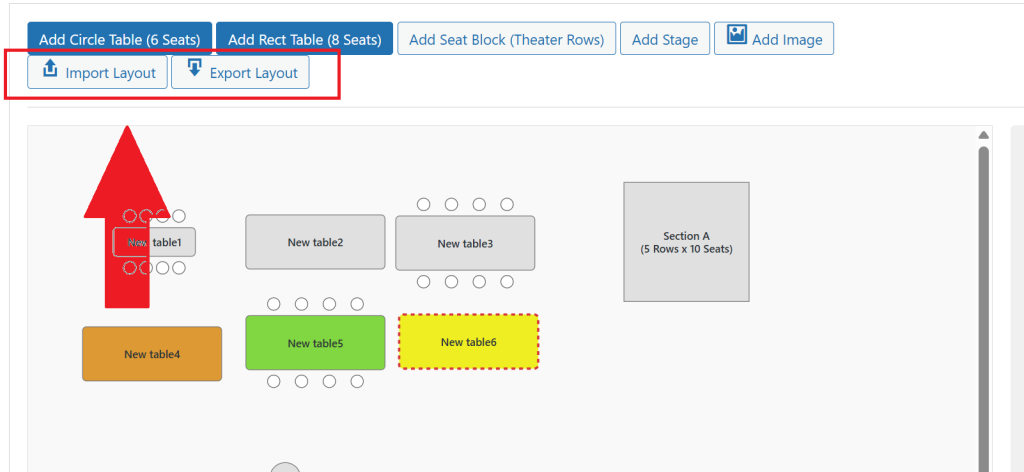Stop Doing Double Work: The Power of a Reusable Event Layout Template
As an event organizer, your most valuable asset is time. So why are you spending it rebuilding the same seating chart from scratch every time you host a new event in the same venue? Creating an event layout template is one of the most significant workflow improvements you can make, and modern tools make it incredibly simple.
Imagine setting up your complex annual gala with 50 tables, multiple sections, and specific price tiers. Now, imagine setting up next month’s workshop in the same room by clicking just two buttons. That’s the power of a template.
This article will show you how this templating system works and why it’s an essential feature for any serious event professional.
An event layout template is a digital file that contains all the structural and visual information about your seating chart. It’s a blueprint of your venue. This isn’t just an image; it’s a data file (usually a .json file) that stores crucial details like:
- The exact position, size, and rotation of every table, seat block, and stage.
- The number of seats per table or the rows/seats in a theater section.
- Custom colors assigned to different elements.
- Assigned price tiers (e.g., this table is “VIP,” that section is “Standard”).
- “Whole Table Only” booking rules.
Essentially, it saves everything except for the actual bookings, creating a clean, reusable foundation.
A good templating system is incredibly straightforward.
Step 1: Export Your Masterpiece
Once you’ve perfected the layout for an event, you simply click an “Export Layout” button in your seating chart builder. This will download the .json file to your computer. You can name it something descriptive, like main-ballroom-gala-setup.json. You can create and save as many of these templates as you need for different rooms or configurations.

Step 2: Import in Seconds
The next time you create a new event that uses this layout, you:
- Click the “Import Layout” button.
- Select the .json file you saved earlier.
- Confirm that you want to apply the template.
Instantly, the entire seating chart is recreated on your screen, with all its settings intact. From there, you can either use it as-is or make minor adjustments for this specific event. Furthermore, a smart import system will preserve any existing bookings, so you don’t have to worry about accidentally deleting sales data if you’re just updating a layout.
- Massive Time Savings: This is the biggest benefit. What once took an hour now takes less than a minute.
- Consistency: Ensure that every event in the same venue has a consistent, professional-looking layout. No more slightly-off-center stages or misplaced tables.
- Reduce Errors: Manually recreating a complex layout is prone to mistakes. A template eliminates the risk of forgetting a table or misconfiguring a price tier.
- Empower Your Team: Anyone on your team can now set up a new event, even if they aren’t a design expert. Just tell them to import the correct template.
Using an event layout template is a core principle of efficient event management. It’s about working smarter, not harder. To learn more about streamlining workflows, check out this excellent guide on event project management.
Our Live Event Seating plugin includes this powerful import/export feature right in the visual builder. If you’re ready to stop rebuilding and start launching events faster, see how our features can help you.
